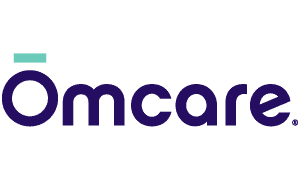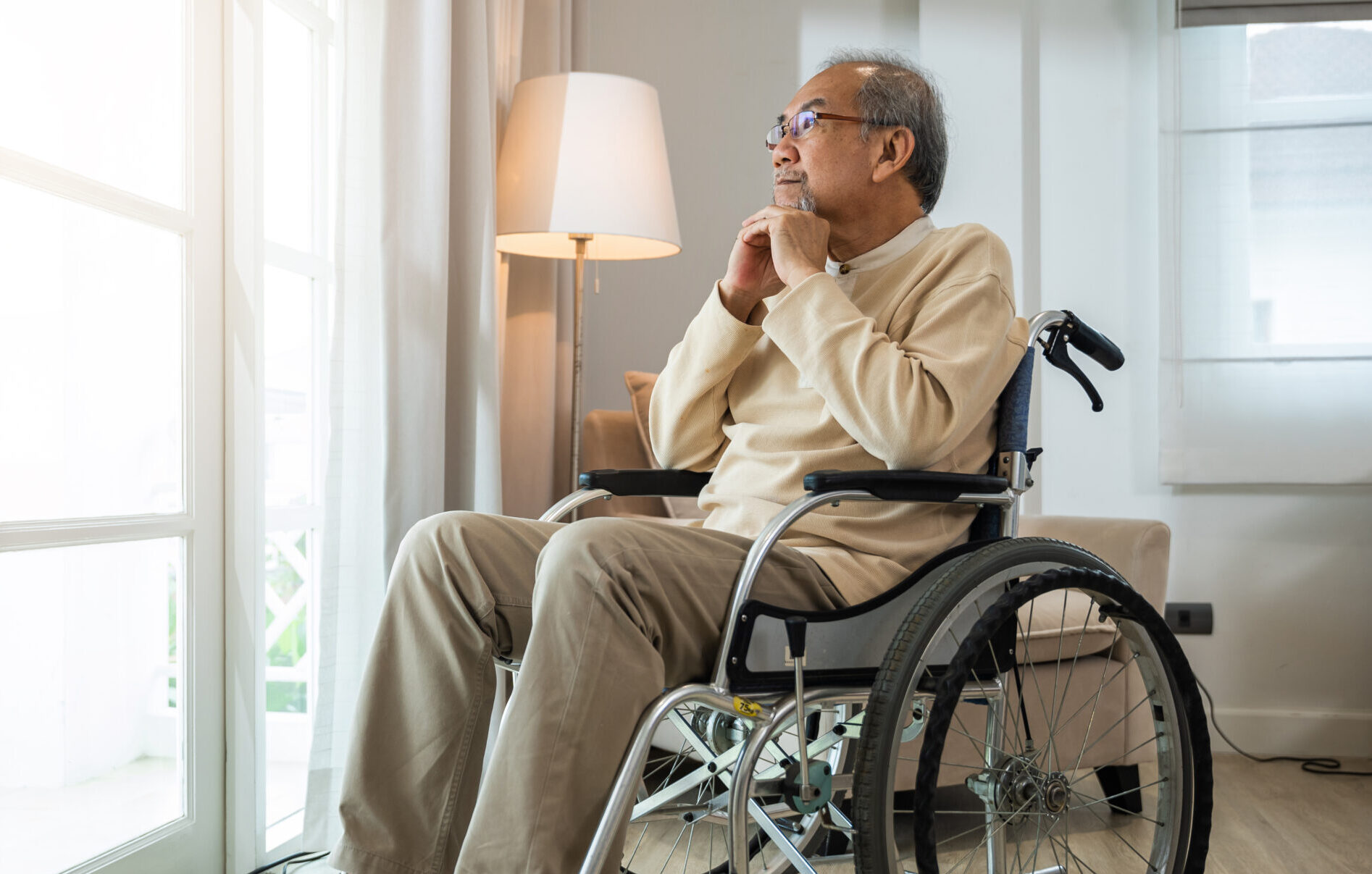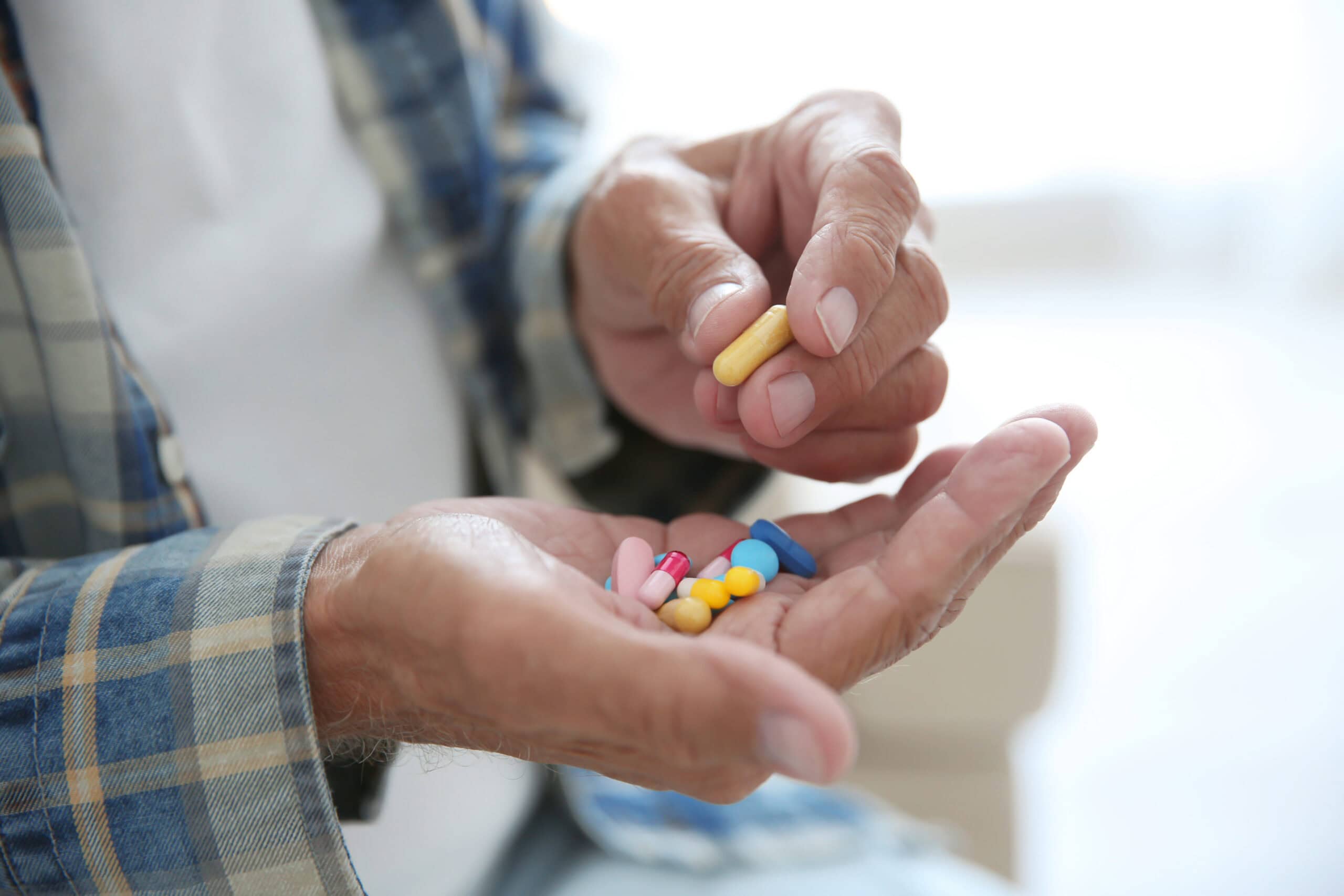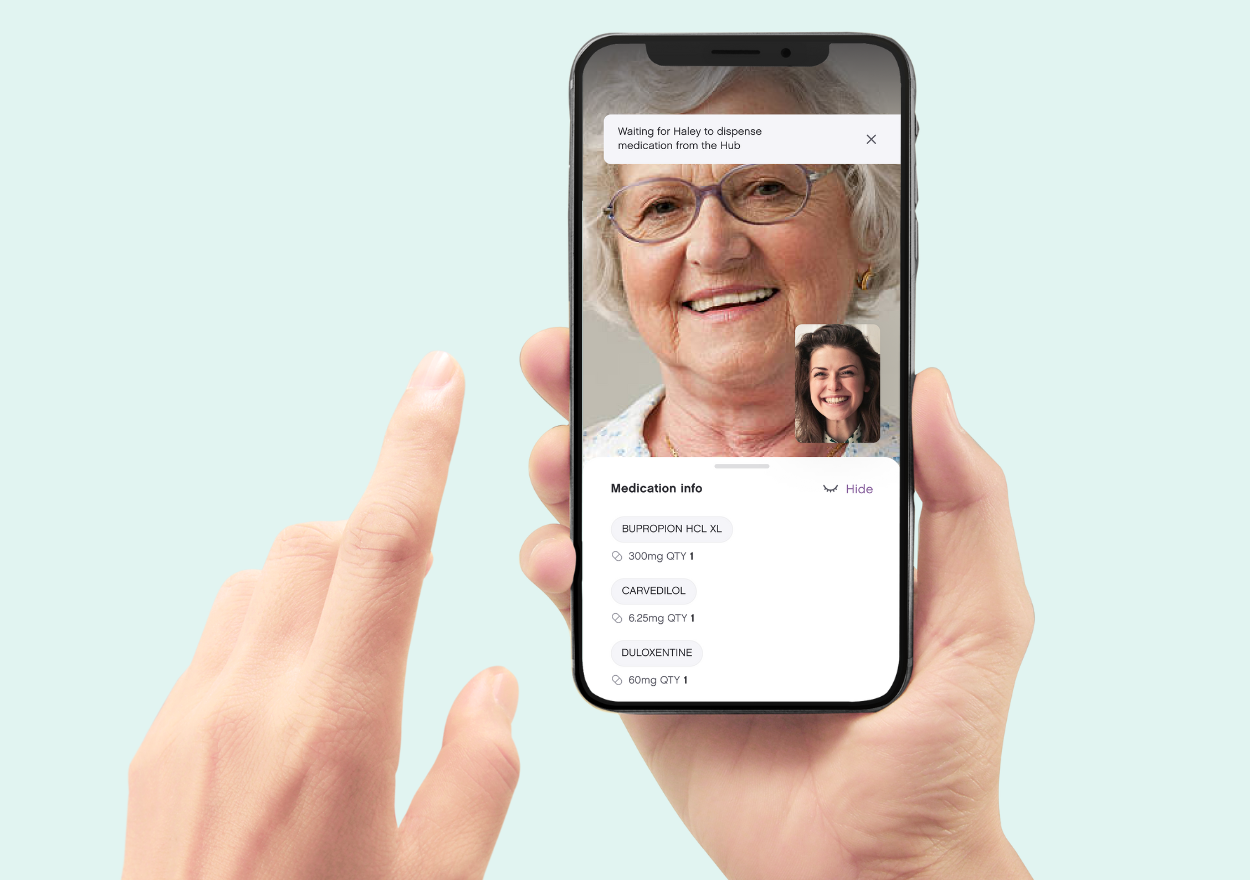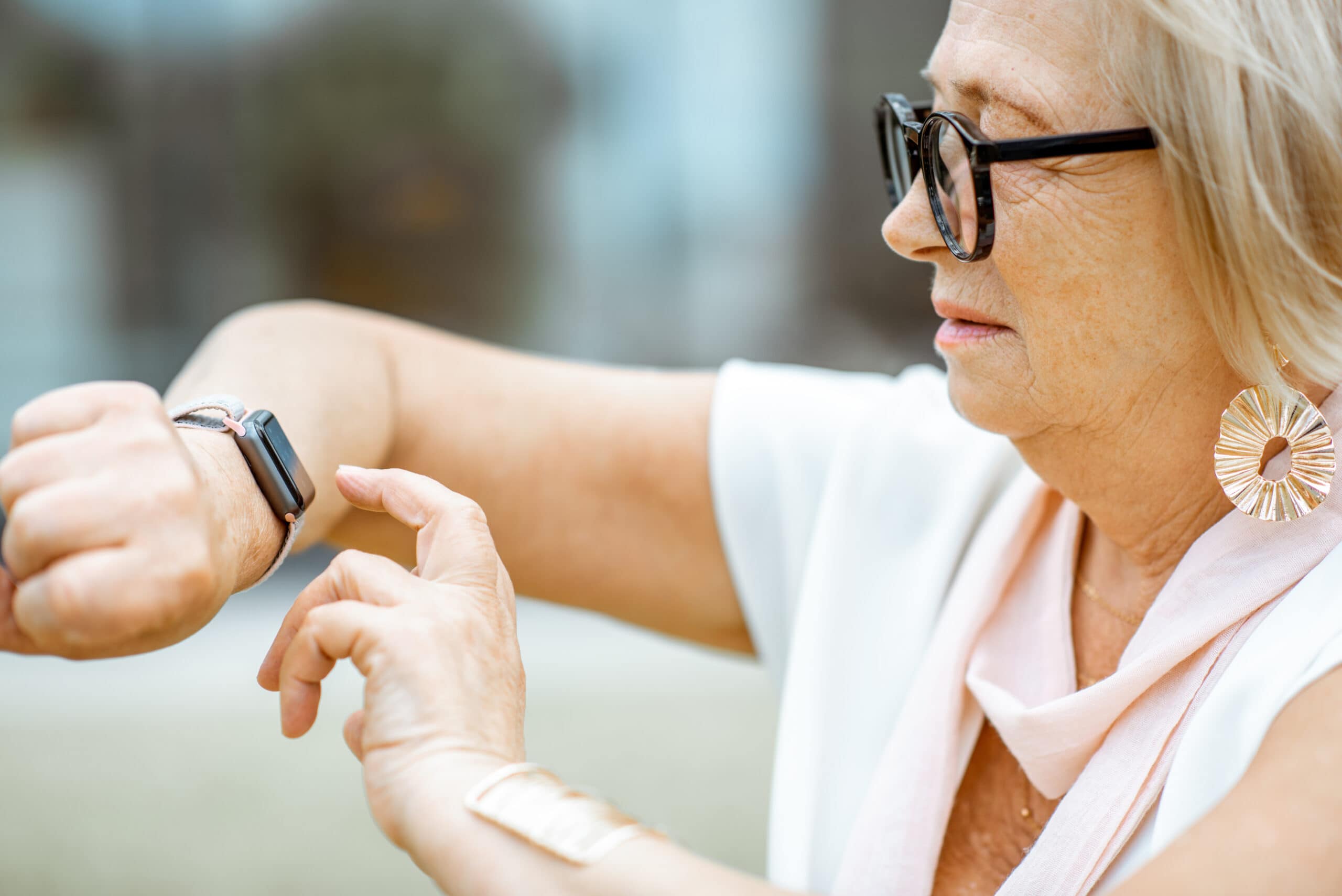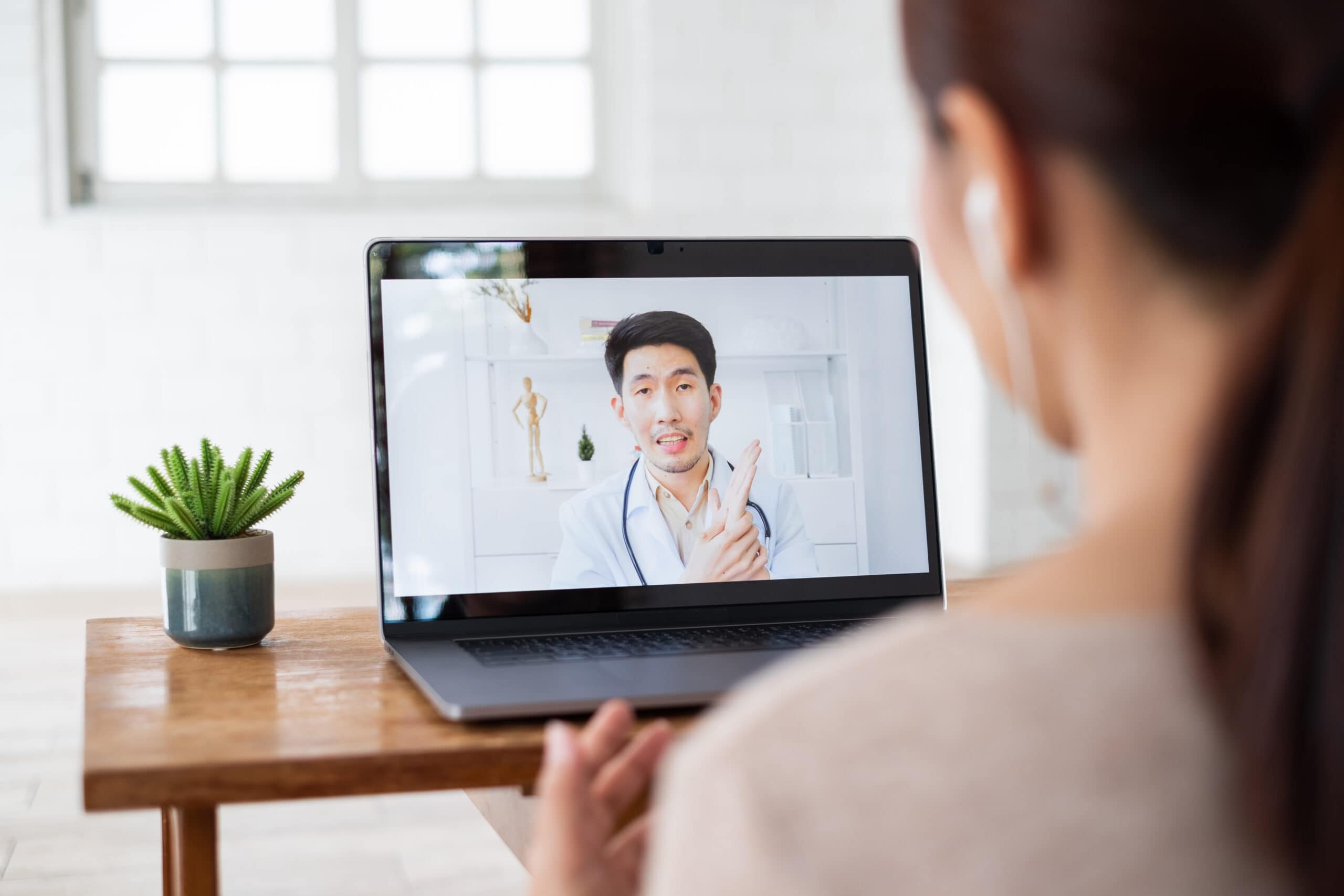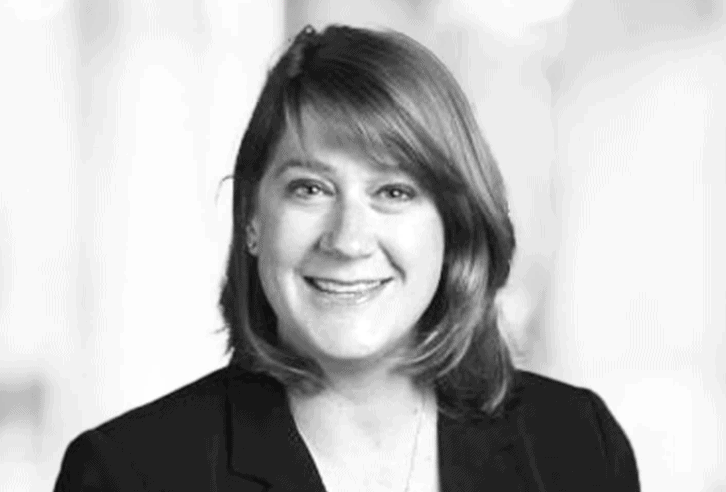Medication adherence 101: Why it matters and how to stay on track
May 31, 2024Age Tech,Senior CareBlog
The risk of a health disorder worsening is increased by non-adherence to treatment, most often seen as prescription medication non-adherence. Understanding the importance of taking medication as prescribed and implementing strategies to do so helps improve health outcomes.
According to the Centers for Disease Control, non-adherence is associated with higher rates of hospital admissions, worsened health, and an increased mortality (death) risk. Around 50% of all US adults are non-adherent to their prescribed medications. Meanwhile, seniors are the least likely to adhere to medication as prescribed by their doctors.
How medication adherence can impact managing acute and chronic health disorders
The dose of a medication is prescribed for each drug, as well as the drug itself. That dose is determined based on many patient factors, such as:
- Severity of the health disorder to be treated.
- Age of the patient.
- Body Mass Index (BMI) of the patient.
- Time of day a drug in pill form will be taken.
If a person prescribed a specific drug takes it at a lower or higher dose, the drug can be ineffective at treating the disorder or cause side effects. For example, some prescription medications to control high blood pressure (BP) are taken twice per day. If the patient takes it only once each day, the high BP may not be well-controlled. In turn, this could result in a preventable stroke.
Failure to take a prescribed drug – or suddenly stopping it – can lead to negative health effects.
Reasons seniors can fail at medication adherence
Nearly 40% of all adults experience some degree of short-term memory loss after age 65. Senior-aged adults are also more likely to take more daily prescription medications. This is because senior-aged adults are more likely to be afflicted with various chronic health disorders.
Some common chronic health disorders are also linked to an increased risk for depression based on brain chemistry changes. Researchers have found that depressed patients are 76% more likely to be non-adherent to prescribed medications as compared to their non-depressed counterparts. Whatever the reason for the non-adherence, there are methods you can use to stay on better track with your prescribed daily medications.
How prescription drug reminder messages can improve medication adherence
Setting an alarm on an alarm clock is one way to remind yourself to take a prescribed daily medication, many adults do this in order to take a particular prescription drug at a specific time. For seniors transferred from a hospital to a rehab center, the nursing staff will most likely let patients know when to take a prescribed medication and provide it to them. However, patients discharged at home are often left feeling hopeless with managing a complex schedule.
“Smart” digital devices such as Ōmcare’s Home Health Hub® are growing in popularity, due to their ability to provide reminders as well as enable videoconferencing. The Hub is specifically designed for seniors, and it can dispense the prescribed medication in pre-packaged pouches, as well as remind the senior to take it at exactly the right time.
Connecting generations: The role of telehealth in senior care
May 17, 2024Age Tech,Senior CareBlog
Mobility problems are far more common among senior-aged adults (as opposed to younger ones). At least 35% of seniors between 70-79 years of age, and most seniors aged 85 and older, have walking difficulties. Meanwhile, driving ability is also lessened among this age group. Fortunately, widespread telehealth expansion consequent to the Covid-19 pandemic has made it possible for more seniors to keep their scheduled medical appointments than ever before. While the overall benefits of using telehealth became obvious during the Covid-19 pandemic, the continued increase in telehealth use among seniors is enabling far better self-management of their chronic health conditions. From high blood pressure to diabetes, telehealth is helping more senior-aged patients to prevent worsening of their disorders through obtaining ongoing follow-up care. The following describes three of the vital roles of telehealth in senior care.
Telehealth for health prevention education
More than 50% of adults aged 65 and older are living with prediabetes, and 25% have full-blown Type-2 diabetes. For those diagnosed with prediabetes, changing daily eating habits right away may prevent the progression to Type-2 diabetes. Yet, eating a diet high in carbohydrates and/or sugar may be a lifelong habit that feels impossible to change. Furthermore, some people do not understand how changing daily eating habits can prevent Type-2 diabetes.
After prediabetes is diagnosed by a doctor, it is important to learn how to control blood sugar through daily dietary intake. While an appointment with a nutritionist or diabetes educator may be scheduled by the doctor that diagnosed the prediabetes, many seniors do not attend such appointments due to lack of transportation. However, being offered the option to attend these appointments “virtually” via telehealth can enable the person with prediabetes to change daily eating habits to avoid needing diabetes medication.
It is important to realize that a lack of understanding regarding how to prevent a particular chronic disorder is often the reason an older-aged person develops that disorder. For example, lack of a regular exercise routine increases the risk for heart disease. Notably, receiving health education by a nurse or doctor that is targeted toward increasing daily exercise in seniors can lead to better heart rate function. By undertaking a daily exercise routine, premature heart disease progression can be delayed in seniors experiencing the early symptoms of heart disease. Therefore, telehealth for health prevention education can enable seniors to prevent avoidable disabilities and premature death.
Managing medication refills through senior telehealth use
Skipped doses of medications account for 125,000 deaths annually, and 10-25% of hospital admissions. A common reason that seniors may skip prescribed doses is that they were not able to travel to pick up the next monthly supply of the medication from their pharmacy. Another is that those seniors needed to acquire a new refill prescription from the doctor in order for the pharmacy to continue providing that medication. By using telehealth, a senior may be able to quickly talk to their doctor and/or pharmacist to avoid running out of the medication. While many pharmacies can now deliver a patient’s medication to the home address, a current prescription refill request from a doctor still needs to exist at that pharmacy for it to be filled. Thus, telehealth can enable a rapid resolution of the problem that prevented the senior from having enough medication “on hand” not to skip a dose.
Recognizing when an “in-person” healthcare visit is necessary or not
Not every senior who is experiencing a symptom of a health disorder needs to have an “in-person” medical appointment to obtain treatment. Falls are the leading cause of injury in seniors, and one in every four seniors report a fall each year (per the Centers for Disease Control). While a fall can result in a broken bone, most falls just result in a sprained ankle or wrist. Talking to a healthcare provider via telehealth can enable the injured senior to care for the sprain at home in many cases.
This self-care may involve applying an ice pack, elevating the affected limb, and/or bandaging the joint in a specific way to prevent moving it. By having a healthcare provider instruct the senior-aged patient in how to self-treat a minor sprain via a telehealth visit, a trip to the doctor’s office (that could potentially further injure the joint) may be avoided. Meanwhile, following the healthcare provider’s self-care instructions may also promote faster healing of that sprain.
Senior-aged adults living with Type-2 diabetes and taking diabetes medication can sometimes have a sudden drop in blood glucose level. Most often, this is because a meal was skipped or the diabetic person engaged in unusually vigorous exercise. Through talking to a healthcare provider quickly via telehealth, the senior-aged person can find out how whether drinking some orange juice may be enough to reverse the low blood glucose (hypoglycemia) or whether injectable glucagon is necessary. Moreover, that telehealth visit can enable the diabetic senior to know whether to immediately visit a hospital Emergency Room for treatment.
The Ōmcare Home Health Hub® offers videoconferencing capabilities with loved ones and professional caregivers currently and will offer full telehealth abilities in the future. This allows the Hub to not provide medication reminders and dispensing of pre-packaged medications, but also will enable you to connect with a provider as well. Creating an all-in-one system makes using technology that much simpler and thus more effective.
Ōmcare and PharMerica Team Up to Provide the Comprehensive Last Mile Solution to Tackle Medication Non-Adherence
May 14, 2024PressPress Releases,News
- Ōmcare will integrate with PharMerica's full-service home delivery pharmacy and proprietary pharmacy information system for seamless medication dispense by the Ōmcare Home Health Hub® platform, bridging a critical gap in the healthcare sector's ability to ensure right medication, right time, right person.
- The integrated solution serves as a platform for new, more efficient service models for senior care and home health operators at a critical juncture for the healthcare industry as more and more Americans are not only living longer, but doing so at time when access to caregivers is falling and seniors are dealing with an increasing number of chronic conditions.
BLOOMINGTON, Minn., May 14, 2024 /PRNewswire/ -- Ōmcare today announced that it is collaborating with PharMerica to deliver a comprehensive last mile solution to address medication non-adherence, a problem that costs the healthcare industry in excess of $500 billion a year. Approximately 40% of hospital admissions stem from issues related to medication non-adherence as do 150,000 deaths each year. The novel alliance between Ōmcare and PharMerica will empower clinicians with better visibility into how patients are actually using the medications they have been prescribed.
Ōmcare's at-home telehealth platform will integrate with PharMerica's pharmacy fulfillment capabilities and proprietary pre-packaging technology to deliver one-touch access to caregivers, remote patient monitoring and medication dispensing with visual adherence confirmation. Unlike current industry practices in which clinicians, absent the on-site presence of a caregiver, have little to no indication that medications are in fact being properly administered, this novel approach will not only deliver the prescribed medications but ensure that the right medications are dispensed to the right person and taken at the right time.
"For far too long, clinicians have not had adequate visibility into how the medications they prescribe to their patients – particularly among seniors – are being taken, especially when they are living independently," remarked Lisa Lavin, the CEO of Ōmcare. "This alliance with PharMerica will revolutionize the way in which we think about end-to-end pharmacy. It will equip clinicians with a valuable tool to ensure that prescribed medications are being administered in the way they were intended while giving family the peace of mind that comes when knowing that loved ones are getting the right meds at the right time."
Traditionally, pharmacies deliver prescribed medications to patients and it is usually up to them or their caregivers to ensure that they are taking the right medications, the right dosages, and at the right time. Up until now, this last mile in medication administration has been rife with challenges as many patients – particularly senior populations – struggle to manage often complex medication requirements.
"Today's announcement of our alliance with Ōmcare marks the next phase in our efforts to transform the pharmacy landscape, specifically addressing that critical last mile into private homes and senior living, ensuring that medication is being effectively administered precisely as clinicians intended," said T.J. Griffin, the Chief Clinical Officer of PharMerica. "The Ōmcare Home Health Hub's ability to monitor and validate medication dose-level adherence sets a new bar in the industry and is the perfect value-add complement to our existing suite of solutions."
"We believe that this synergy between our two companies offers a glimpse into a not-so-distant future when medication non-adherence becomes a far more manageable issue," added Griffin.
Medication nonadherence is one of the biggest problems in healthcare with over 50% of all medications prescribed are taken incorrectly or not at all. And although the challenges related to medication adherence exist in every age group, the issue is particularly acute among aging populations who, due to skyrocketing healthcare costs and other systemic factors, are aging at home longer than in previous generations. With 11,000 people turning 65 every day in the United States, the size of this cohort is projected to more than double from 46 million today to over 98 million by 2060, at which point seniors will account for nearly 1 in 4 Americans. Moreover, as many as 4 in 10 older adults take 5 or more prescriptions on a daily basis and nearly 20% are taking 10 drugs or more.
The Ōmcare Home Health Hub is commercially available through senior care and home care providers to bring existing telehealth infrastructure and services into the home to improve health, reduce cost, increase member engagement, and elevate patient experience.
About Ōmcare
Ōmcare is a digital health technology company that is Changing the way the world cares® for the aging and complex chronic condition population. Ōmcare has pioneered an all-in-one, integrated home health platform that enables rapid deployment of a home care strategy with one-touch access to telehealth services, aggregated remote patient monitoring and medication dispensing with visual confirmation of dose-level medication adherence. The Ōmcare Home Health Hub® enables a "phygital care" model by serving as a portal for health care providers to maintain patient health and independence while reducing the cost of care.
Ōmcare is an AARP Innovation Labs portfolio company, was recognized as one of the "top innovations" by the New York Observer and has been heralded by the Accenture HealthTech Innovation Challenge as one of most innovative startups serving North America focused on solutions for health organizations. To learn more, visit www.Omcare.com/contact-us-providers/ or www.Omcare.com.
About PharMerica
PharMerica is a leading provider of institutional, community- and home-based pharmacy services. The company serves the long-term care, senior living, hospital, home infusion, hospice, behavioral, specialty and oncology pharmacy markets. PharMerica operates over 180 long-term care, home infusion, and specialty pharmacies in 50 states. PharMerica is a customer- and patient-focused organization serving health care providers, such as skilled nursing facilities, senior living communities, and hospitals, as well as individuals with behavioral needs, individuals with infusion therapy needs, seniors receiving in-home care, and patients with cancer. The company provides highly reliable, accurate medication delivery and support services to approximately 350,000 individuals a day with unmatched service reliability, cost containment solutions, and clinical, regulatory and educational support for its clients and their residents and patients. For more information, visit www.pharmerica.com.
Ōmcare Media Contact:
Morgan Rogers
Morgan.rogers@omcare.com
PharMerica Media Contact:
Leigh White
leigh.white@brightspringhealth.com
SOURCE Ōmcare
Breaking barriers: Overcoming challenges in medication adherence
May 3, 2024Age Tech,Senior CareBlog
Less than 50% of all adults aged 60 and older are adherent to their prescribed medications (and the number goes way down when medication regimes increase in complexity). When drugs are prescribed to patients to treat disorders, the doses are tailored to that individual’s health needs. Therefore, not taking medications as prescribed (called nonadherence) can have dire consequences.
While in-person supervision all day to ensure that an older-aged person correctly takes their medications is effective, it is not possible for both cost and resourcing concerns. Fortunately, there are other options to overcoming challenges to medication adherence that also enable more personal independence.
Reminding yourself or your family member to adhere to prescribed medications
Reportedly, 40% of those aged 65 and older have short-term memory impairments, per a medical research article in BMJ.
Therefore, using some system to remind yourself (or your senior-aged loved one) to take a daily medication is a good idea. This is especially true for seniors who are taking multiple daily prescribed medications to manage chronic health disorders or prevent them from developing.
For inexpensive ways (yet not fully fool proof either), you could try daily planners, sticky notes, or cell phone reminders. However, keep in mind these tactics can have limitations — such as remembering if the sticky note was for today or yesterday.
Medication interactions and side effects: Their role in prescription drug nonadherence
The use of multiple daily medications to treat diseases and chronic health disorders is termed polypharmacy, according to the National Institute on Aging. This situation is most common in senior-aged people, and it increases the risk of a negative medication interaction. Around 50% of all seniors daily utilize at least five different medications. Meanwhile, a recent article in Cancer reported that 80% of senior-aged adults with cancer take five or more prescription drugs every day.
The potential for a negative drug-to-drug interaction – and especially a gastrointestinal (GI) effect such as constipation or diarrhea – can lead to nonadherence in taking prescribed medications. Meanwhile, there is a recognized relationship between polypharmacy and the risk for kidney damage in elderly people. Therefore, it is crucial that medication monitoring by healthcare providers occur on a frequent and regular basis in seniors taking multiple daily medications. In this way, seniors prescribed drugs to treat their chronic health disorders will be less likely to either stop or incorrectly take their medications.
Besides cancer, three common disorders in seniors that can require taking multiple daily prescribed medications are:
- Heart disorders (and especially following a heart attack resulting in heart damage)
- Stroke
- Diabetes (Types 1 and 2)
Why are seniors at greater risk for short-term memory problems?
Younger brains have a higher capacity for neuroplasticity than older brains. This means that – when brain cells mature and die – new ones are more likely to be generated at a more rapid rate in younger people than in senior-aged adults. Even more problematic, around 75% of all strokes occur in adults aged 65 and older. While a mild stroke may cause only slight weakness in a body part, strokes cause the death of brain cells. As a result, senior-aged stroke survivors are more likely to have short-term memory impairments.
Taking antidepressants over many years can also result in short-term memory loss (per an article in Psychiatry Journal). Since stroke survivors often experience chronic depression, antidepressants are often prescribed to them. Furthermore, dementia is far more common in seniors than younger aged adults. Whatever the cause, having a short-term memory impairment can lead to forgetting to take a prescribed daily medication.
The harmful consequences of not taking a prescribed medication
Disability is the most common consequence of not taking a prescribed medication or not taking it correctly. For example, diabetes that is not well-controlled can lead to diverse other health disorders. Peripheral nerve pain and heart disease are far more common in diabetics with poorly-controlled blood sugar than in those with their diabetes under good control.
Premature fatality is also a potential harmful consequence for people with chronic disorders who fail to take their daily medications. This is especially the case for people living with heart disease, cancer, or diabetes. Therefore, understanding why a specific medication is important plus not forgetting to take it is important for future health.
If you are a senior or the caregiver of a senior, the Ōmcare Home Health Hub® is an all-in-one platform that can aid medication adherence by both providing medication reminders and dispensing the prescribed medications in a pre-packaged pouch.
Beyond the prescription refill: Strategies for medication success in older adults
April 19, 2024Age Tech,Senior CareBlog
Most pharmacies provide reminders by phone or email to their customers to pick up a needed refill of a daily prescribed drug. That’s great, but it does not solve the problem for older-aged adults of remembering to take a daily medication and take it correctly. Indeed, around 50% of all seniors prescribed medication to manage their disorders do not take them as prescribed. Besides forgetting to take a prescribed pill, taking them at the wrong time of day or mixing them up altogether also occurs.
The following are some alarming statistics to consider about older-aged adults’ medication use. At least 90% of all seniors in the US take at least one prescribed daily medication, and 36% take five or more different ones each day. Meanwhile, up to 96% of seniors report that they frequently make mistakes in taking their prescribed drugs (per an article in 2019 in Expert Review of Clinical Pharmacology).
How to lessen the likelihood of forgetting which daily medication to take
Many prescribed pills look quite similar. However, some are of a different color, have indented areas in order to cut them, or have the pharmaceutical manufacturer’s name carved into them. Yet others are rectangular rather than round, or are in capsule or gummy form. Creating a poster to tape to your bedroom wall of a photo of each pill – with its name plus its corresponding instructions for use – is one strategy that can aid you (or your loved one) in telling those daily medications apart. This can take time to create, but it can be especially useful for people who put their pills in some type of pill box organizer.
Rather than placing all daily pills in a single (small) pill box, using a large pill box organizer with separate compartments for each day of the week can be an excellent strategy. However, the correct pill still has to be placed in the correct compartment. By taking a photo of each medication with its description (pasted onto a poster board that is taped to a wall), a dropped pill that lands on the kitchen table can be more easily identified to place it back in the correct compartment.
Using digital devices as a reminder tool for taking medications
Smartphones and other digital devices can be set up to provide a reminder on-screen to take your daily medication. In a recent study focused on people diagnosed with epilepsy, 71% reported using their cell phones to remind them to take their daily medication. Writing down each pill to be taken each day into a desk “calendar” (that includes a line for each hour of the day) may appear to be best for senior-aged people that do not know how to use smartphones or tablets. However, that manual method typically requires far more time and mental concentration to maintain correctly. Furthermore, it can result in accidentally writing the medication reminder on the wrong date and/or on the wrong calendar line corresponding to the time of day to take each pill.
A better strategy includes using all-in-one home health devices that can store your medications, take pictures, serve up pictures on each medication, and send reminders.
That’s exactly what the Ōmcare Home Health Hub® does while providing smartphone updates and real-time reporting to loved ones and caregivers. This eliminates the burden of manual sorting, manual reminders, or needing multiple devices to put it all together.
However you go about it, increasing the ease of getting the right med at the right time is critical to patient comfort, quality of life, and safety.
Connecting rural communities to better healthcare through technology
April 5, 2024Age Tech,Senior CareBlog
Rural communities in the US are the least likely to have Internet connectivity. In particular, many rural areas lack broadband connectivity, which is the high-speed Internet capacity that exists in non-rural communities. According to the US Department of Agriculture, at least 22% of all rural communities lack broadband, as compared to only 1.5% of urban communities. As you probably are well aware, the reason that broadband is now so critical is that it is required for cell phone and mobile device Wi-Fi, web-browsing, video-streaming, and many other types of connections. Moreover, it enables users to have a constant Internet connection, rather than having to connect through a dial-up modem.
Why is broadband internet connectivity needed by healthcare providers?
Healthcare providers, hospitals, and healthcare systems depend upon having a broadband connection to accomplish numerous and diverse tasks, including the following:
- Share health data (such as share a hospital record with a patient’s outpatient physicians);
- Offer telehealth services to patients;
- Interact in groups with other healthcare providers via videoconferencing software;
- Quickly communicate with patients and each other via a mobile phone call or text message;
- Share large amounts of data with state public health departments (such as share data about in-patients in each hospital admitted monthly with a Covid-19 infection);
- Submit a new medication prescription or a “refill” request online to a pharmacy.
Changes that are enabling increased broadband internet access in rural communities
Various federal governmental executive orders have enabled funding for the infrastructure needed for broadband (“high-speed”) Internet connections. This includes installing the underground cables and nearby satellite towers required for broadband Internet connections. Federal grants and loans have been offered/provided to develop broadband infrastructure in rural populated areas.
However, a gap still remains between broadband Internet in the homes of rural community residents in the US as opposed to residents of cities. According to a Pew Research Center report in 2024, 73% of adults in rural communities now have broadband Internet at home, as compared to 77% of adults in urban areas and 86% of adults in suburban areas. Notably, that proportion for rural residents was only 58% in 2018.
The capacity to access telehealth services & why it matters for patient health
The advantage of having access to telehealth services was highlighted during the Covid-19 pandemic, when access to “in-person” care became limited. One reason was that healthcare providers were concerned about contracting a Covid-19 infection from patients, and another was that patients were concerned about contracting Covid-19 from a healthcare setting. Therefore, telehealth became widely embraced as a way that patients could receive healthcare services without leaving home. This was especially valued by senior-aged and/or immune-compromised adults, who are at increased risk.
The use of videoconferencing software for telehealth interactions between clinicians (such as doctors and mental health therapists) was embraced, and continues to be particularly beneficial to the following groups of people:
- Adults aged 65 and older;
- Adults with physical disabilities;
- Adults without access to transportation to travel to a healthcare provider’s office.
People who live in rural communities frequently live far from the nearest hospital and their healthcare providers. The National Rural Health Association reports that – for every 100,000 people in a rural area of the US – there are 39 physicians to serve them. This is a direct contrast to 53 in urban areas. Meanwhile, there are only 30 specialist physicians (such as cardiologists) in rural areas, as opposed to 263 in urban areas. Hospital closures in rural areas in the past few years have far outpaced hospital closures in urban and suburban areas of the US.
The link between lack of broadband internet and chronic health disorders
It is vital to realize that a lack of access to physicians/hospitals in rural communities is a reason that the residents of rural communities in the US have more chronic health disorders than those not living in rural regions. Since prevention and early treatment of chronic disorders (such as Diabetes-Type 2) are often delayed due to lack of physician access, healthcare researchers have concluded that the high prevalence of chronic disorders in rural residents is largely due to a lack of early prevention and treatment access. Therefore, broadband Internet to access telehealth can be a “super-determinant” of health, per the US Substance and Mental Health Services Administration (SAMHSA).
Digital options for connection
As innovation continues in the home health space, many companies are moving toward cellular or low internet requirements to make this burden less prevalent and better reach rural communities.
For example, while the Ōmcare Home Health Hub still requires internet to function currently, it is the lowest amount possible, allowing for a lower need by both the patient and provider.
Is AI taking the place of in-person medication reminders?
March 22, 2024Age Tech,Senior Care,Medicare AdvantageBlog
Artificial Intelligence (AI) is being used by healthcare providers to better understand the effectiveness of prescribed drugs to treat a health disorder. It is also being used to better understand whether an individual patient is likely to forget to take a prescribed drug. The problem of forgetting to take a prescribed daily medication (or take it correctly) has huge implications. This is especially so for seniors with chronic health disorders. For example, not taking daily blood pressure (BP) medication to control high BP can lead to a spike in BP. In turn, this can result in a stroke. Therefore, knowing which patients need medication reminders and/or are likely to fail to take their prescribed medications is critical.
How senior-aged adults typically receive in-person medication reminders
The following are four customary ways that seniors receive “in-person” reminders to take their prescribed daily medications:
- Reminder from a spouse or other family member living in the same home with the older-aged person.
- Visits and/or phone calls from a family member or other loved one.
- Follow-up phone calls to a patient from a primary care doctor and/or neighborhood drugstore to check whether that person is taking a specific prescribed medication.
- Reminders during a scheduled visit by a paid caregiver such as a home health aide.
Relying on other people for reminders at any age can be risky, but it can be especially unreliable for senior-aged adults. Problematically, at least 27% of senior-aged adults live alone, the majority have no nearby adult children, and many married elderly people have a spouse with dementia. The problem of forgetting to take prescribed drugs and/or not taking them as physician-instructed (termed nonadherence) is especially found in older-aged adults who take multiple medications, according to a Journal of Family Medicine and Primary Care article.
Can AI enable improved medication understanding and patient adherence?
It is widely recognized among Health Information Technology (HIT) researchers that the huge patient datasets used by Artificial Intelligence (AI) can determine far more rapidly than healthcare providers or medical researchers:
- Whether a specific medication is more likely to manage a chronic health disorder (such as high blood pressure) in patients based on characteristics such as age, when compared to a different drug.
- Whether patients with certain health disorders are more likely to forget taking a prescribed daily drug, take it at the wrong time of day, or take too many (or too few) daily doses.
- Whether patients with a past history of nonadherence to prescribed medication are more likely to be nonadherent to a new prescribed medication, as based on the reason for the past nonadherence.
How AI medication reminders powered are delivered to patients
An ever-increasing number of physician practices, healthcare systems, pharmacies, and insurance companies are utilizing AI-powered medication-reminder apps to contact patients. That contact is most often made to the recipient’s landline or smartphone in the form of an automated phone call. Meanwhile, smartphones and other digital devices can (and do) receive additional reminders via email and text, based on the patient’s preference.
The reason for the booming AI medication-reminder trend
The primary reason AI-powered medication reminders have caught on so quickly among clinicians, pharmacists, and insurers (such as Medicare Advantage plans) is that a tremendous amount of staff time and energy is required to deliver a personal medication reminder to every patient that needs these reminders. However – while automated medication reminders can improve patient medication adherence – an article in Preventive Medicine concluded that interactive medication reminders are the most effective at increasing medication adherence.
Unlike automated reminders, interactive reminders can enable patients to ask questions and receive immediate answers about their prescribed medications. Therefore, an increased utilization of AI-powered chatbots (that simulate conversation) to answer patients’ medication questions is occurring. In this way, senior-aged patients taking multiple daily medications are less likely to skip taking one of their daily pills, get their dosages mixed up, and not understand the importance of taking each of the medications for their overall health.
As an increasing percentage of senior-aged adults acquire smartphones and other digital devices, AI is likely to take the place of in-person medication reminders on the part of healthcare providers, pharmacies, and insurance companies. That is a good thing since many people – and especially senior-aged people – still do not receive the frequent medication reminders they need to ensure proper adherence.
Aging in the digital age: seniors and smart devices
March 8, 2024Age Tech,Senior CareBlog
Use of digital and other tech devices is commonplace among younger adults, but less so among seniors. However, this reality is changing, and largely due to the broad embracement of “Smart” devices. According to the Pew Research Center, 61% of adults aged 65 and older now own a Smartphone. While this is in comparison to 95% of adults aged 30-49 (plus 83% aged 50-64) the gap between Smartphone adoption among younger adults and seniors is rapidly shrinking. There are now actually a tremendous variety of “Smart” devices that can make life easier and safer for senior-aged adults. The following describes four of the categories of “Smart” devices that can be especially helpful to seniors in their daily lives.
Voice-activated digital and tech-driven devices
The ability to voice-activate digital devices can be a crucial aid for seniors, due to age-related health conditions that can limit finger dexterity or mobility. From turning on the overhead lights in the morning to unlocking the front door, voice-activated “Smart” devices such as Alexa and Google Assistant – paired with a Smart Home gadget – can simplify routine daily tasks. Six other tasks that this type of voice-activated device can do are:
- Let the device user know the day’s weather forecast;
- Turn on (and off) a coffee-maker, microwave oven, or robotic vacuum cleaner;
- Adjust the thermostats in the home to align with the desired temperature;
- Play selected music or an audio book;
- Add a food item to a digital list of groceries to purchase at a supermarket;
- Remind the user of a daily task to be performed such as picking up prescription medications from the drugstore
Around 47% of all adults aged 65 and older have diagnosed osteoarthritis (OA). Meanwhile, nearly 26% of senior-aged people have hand/finger OA. Therefore, voice-activated “Smart” devices can enable seniors living with OA to perform activities that would otherwise be far more difficult, if not impossible.
“Smart” medical alert systems
Medical alert systems that automatically dial 9-1-1, request an ambulance, and/or contact a patient’s doctor can be life-savers for senior-aged people. Three-fourths of all strokes occur in adults aged 65 and older, per a medical research article published in Aging. Without fast treatment, even a mild stroke can result in paralysis. Likewise, heart attacks require immediate medical intervention. For diabetics, a sudden spike in blood sugar level can necessitate obtaining an insulin injection to prevent slipping into a diabetic coma.
While medical alert systems – that paired a device similar to a landline telephone with a wristband (or neck pendant) containing an activation “button” – have existed since the 1980s, “Smart” alert systems now exist on most cell phones and many other types of digital devices.
Medication reminder and dispensing systems
It can be hard to remember to take a prescribed pill at any age, and this is particularly so for senior-aged adults. One reason that remembering to take prescribed medications can be more difficult for seniors is that adults aged 65 and older tend to take more daily pills than younger adults. More than half of all senior-aged adults take at least five daily prescription drugs. Telling those pills apart can be hard, and especially in elderly people with worsening eyesight or early Alzheimer’s disease. In turn, this can lead to a mix-up of taking too many pills each day of one prescribed medication and not enough of another.
While a medication reminder can be provided utilizing various “Smart” devices (such as a Smartphone), there are far fewer that can dispense the medications. The Ōmcare Home Health Hub® is one of those “Smart” devices that can dispense medications, as well as provide a reminder to take them.
“Smart” fitness trackers
Engaging in regular daily exercise is important for overall health, and this can be vital in senior-aged people to prevent heart disease. Notably, daily exercise has been found to ward off cognitive decline (such as short-term memory loss) in older-aged people. Mechanical devices such as pedometers have long been recommended to track steps per day.
However – ever since the first Fitbit was marketed to the public in 2009 – there has been an explosion in the availability of “Smart” fitness trackers. Not only have these been used by people (including senior-aged adults) while engaging in fitness activities, but they also have enabled their users to monitor heart rate, respiration rate, and blood pressure.
Overall, utilizing a “Smart” device can assist seniors in maintaining their personal independence, as well as boosting the likelihood of preserving health. Thus, this type of device can aid in reducing the likelihood of developing a preventable disability. By choosing the Omcare Home Health Hub, you can access its diverse capabilities that would otherwise require owning many different “Smart” devices.
The rise and fall of healthcare trends since the pandemic
February 21, 2024Age Tech,Senior CareBlog
Trends in healthcare are constantly changing to adapt to hospital, physician, and patient needs. The Covid-19 pandemic necessitated new ways of delivering patient care that reduced the likelihood of infecting clinicians and patients. Meanwhile, technological advances enabled the development of more collaborative approaches by physician teams to treat patients. However, no change happened so quickly and dramatically as the shift toward providing online “telehealth” services to patients (per a medical research article in 2020). The following describes three rising healthcare trends since the onset of Covid-19, and three healthcare system “norms” that are fading away.
Three rising trends in healthcare delivery to patients
- Increased adoption of team-based approaches to providing patient care:
The high cost of treating chronic disorders such as heart disease, Diabetes Type 2, and asthma has led public health leaders to promote healthcare provider team-based approaches to care. Likewise, the health complications commonly found in hospitalized Covid-19 patients after their discharge required more collaborative efforts.
For example, kidney damage was found in at least 30% of people hospitalized due to Covid-19. Without long-term physician care, daily medications, and dietary changes, people with kidney damage can progress to the life-threatening disorder of kidney failure. By enabling collaboration between primary care doctors (PCPs), specialist physicians, mental health therapists, and nutritionists, a post-hospitalization care approach for recovered Covid-19 patients with kidney damage could be quickly developed and implemented.
Videoconferencing software linking networks of healthcare providers boosted the capacity for healthcare teams to collaborate more efficiently. This continues to enable increased collaborative efforts, and is a rapidly-growing nationwide trend.
- Providing “telehealth” patient care as opposed to requiring a doctor’s office visit:
The use of videoconferencing software and digital solutions has exploded since the onset of the Covid-19 pandemic. Besides enabling people diagnosed with Covid-19 to interact with their healthcare providers without infecting them, telehealth visits also enabled outpatient clinicians to provide help each day to more patients. This was because there was no need to clean and re-stock an exam room for each new patient, since the interactions were conducted online. In addition, it eliminated the necessity for patients to travel to the healthcare provider’s office to receive care.
Elderly patients tend to have an especially difficult time in finding a way to travel to a healthcare provider’s office. Many people aged 70 and older either no longer drive or are unable to use public transportation to reach their healthcare provider’s office. This is especially problematic for seniors without any adult children living close to them, or who have physical disabilities that limit walking.
The huge advantage of “virtual” office visits is that it enables people to receive care from their clinicians without leaving home. Consequently, this has led to an expansion in the capacity of “virtual” technological solutions to deliver healthcare to patients. Not only have healthcare providers and patients embraced “virtual” visits since the onset of the Covid-19 pandemic, mental health therapists are hopping on the bandwagon in large numbers.
- The use of robotic devices to perform surgery:
While the first robotic device used to perform surgery was FDA-approved in the early 2000s, advances in robotic device mechanisms have led to increased usage of robotic devices to perform surgeries. This is especially the case for surgeries requiring finger dexterity beyond that normally possible for the human hand. Outside of use by the military in field hospitals, FDA-approved surgical robotic devices are most often utilized in hospital operating rooms to assist in performing minimally-invasive (laparoscopic) procedures. For example, in 2021, the Hominis Surgical System was approved by the FDA to perform transvaginal hysterectomies.
The use of robotic devices to perform surgical procedures has enabled surgeries to occur with just the presence of a surgeon and one or two assistants, rather than numerous Operating Room (OR) staff members. Therefore, the daily scheduling of more minimally-invasive surgeries per day by hospitals is possible. Due to its revenue-boosting potential, use of robotic devices to perform surgeries is an increasing trend that we imagine will only continue to rise.
Three falling (and disappearing) trends
- Short waiting times in hospital Emergency Rooms (ERs):
Healthcare staff “burn-out” is contributing to fewer personnel to assist patients who walk into a hospital Emergency Room (ER), rather than arriving in an ambulance. However, another reason waiting times are lengthening is that an increasing number of community hospitals are closing, with more people seeking ER care at the remaining hospitals.
- Manual healthcare billing systems:
Billing systems used in physician group practices that send out invoices manually are going the way of the dinosaur. In their place, technologically-driven systems, that can quickly identify correct billing codes and spot billing errors, are becoming a standard practice.
- Rapidly finding an available bed in a nursing home when needed:
Since 2016, more than 500 nursing homes have closed, and many more plan to do so. A chief reason specified by nursing home owners is that they simply cannot afford to stay in business. Meanwhile – as a consequence of the Covid-19 pandemic – it has also been harder for nursing homes to find and hire new nursing aides willing to work for low pay while risking a Covid-19 infection. Since a minimum staff-to-patient ratio is required by state governments, nursing homes cannot accept more patients than they have nursing aides on staff to care for them. Therefore, finding an available nursing home bed to take your elderly family member who can no longer safely live at home is taking far longer than in the past.
These are just some of the changed trends currently occurring across our healthcare system. Advances in Artificial Intelligence (AI) medical research, the development of mRNA cancer treatments, and the continuing shift toward value-based payments by both Medicare and private insurers are other trends that are gathering steam.
Among its numerous capabilities, the Ōmcare Home Health Hub® can enable you to engage in virtual healthcare visits as well as appointment/medication reminders and medication dispensing allowing home to be the site of care.
Employee Spotlight: Wendy Mizutani
February 13, 2024Employee SpotlightBlog
Name: Wendy Mizutani
Title: Vice President of Customer Care and Operations
Education: Master’s of Arts in Leadership, Augsburg University (graduating May 2024), Bachelor’s of Arts in Diplomacy and World Affairs, Occidental College
Time at Ōmcare: 4 Months (also 4 months end of 2019 and beginning of 2020)
One personal fact about you: My happy place is our family cabin in the mountains of Northern California.
1. What led you to Ōmcare?
When changing careers in 2019, I knew that I wanted to join the healthcare industry. In particular, I have a passion for helping people live independently as long as possible, based on my experiences as a caregiver for my mom. I met Lisa through a mutual connection and was inspired by Ōmcare’s mission of changing the way the world cares and addressing un-met needs for the growing population of adults 65+.
2. What’s the most rewarding part of working at Ōmcare?
Hearing from Hub owners, potential owners, and caregivers how Ōmcare simplifies their lives or takes a worry off their very full plate.
3. What is your favorite current project you’re working on?
I love working with the team to help deliver a product our customers will love and building a team of customer care professionals who share a passion to help.
4. Pick out a core value that means a lot to you. How have you seen this lived out in your time at Ōmcare?
We are a team. We understand the lifting power of many wings can achieve twice as much as any bird flying alone. Quite simply, there are no swim lanes or silos at Ōmcare. We’re here to help each other and everyone’s voice and contribution matter.
5. What are you most proud of accomplishing throughout your time at Ōmcare?
I really love the brand identity work that we’ve done with Marketing – it’s how we want to show up not only for our customers but for each other. It aligns with our values and mission and will become the way that we measure success and the quality of our customer service.
6. Why should someone work at Ōmcare?
Ōmcare is a company dedicated to making a real difference in the lives of our customers and their loved ones. Working for a company with clarity on their purpose matters and doing it with people who share that passion is invigorating. Ōmcare is a place where you can grow your skills and be valued for your experience, opinions, and hard work.
